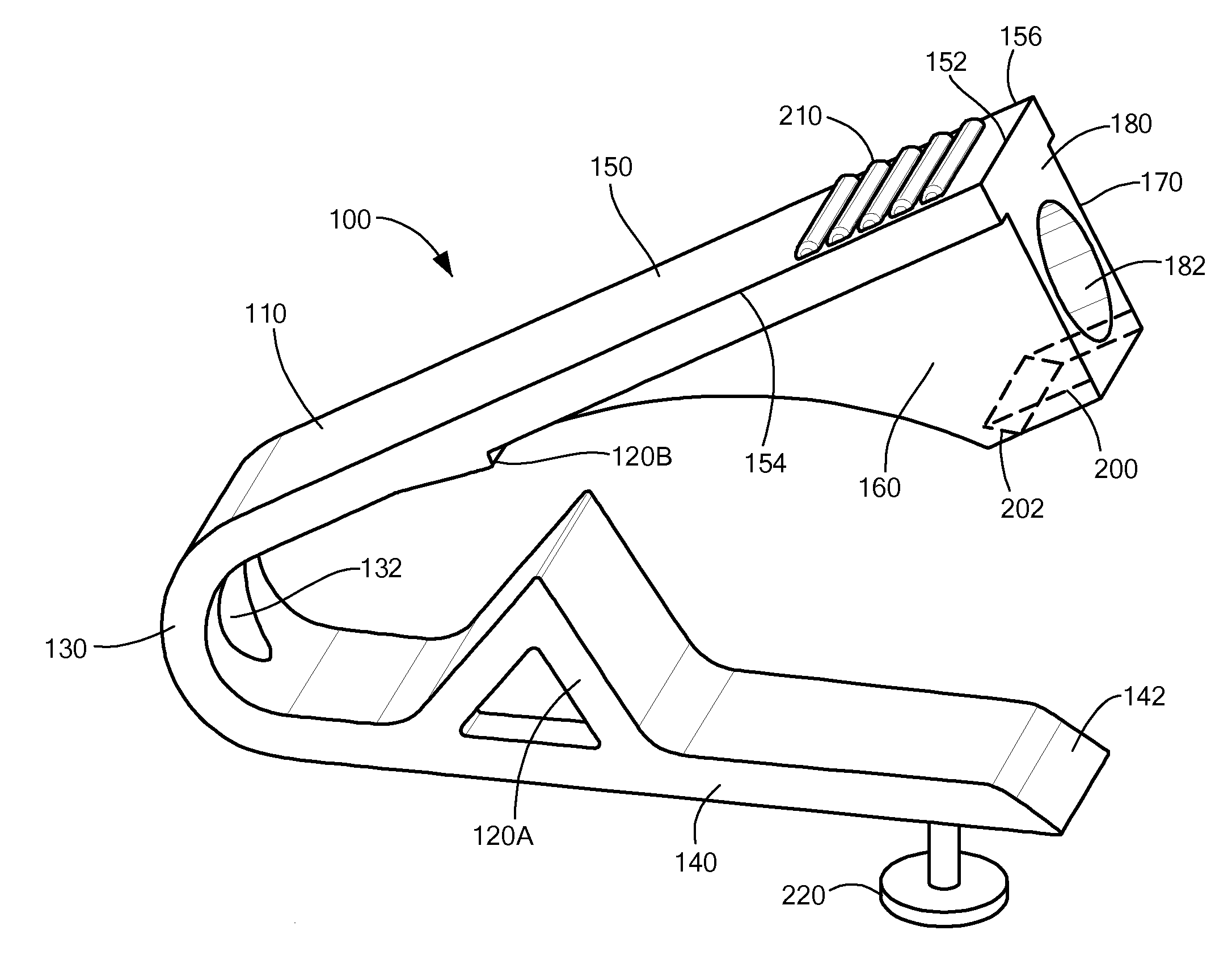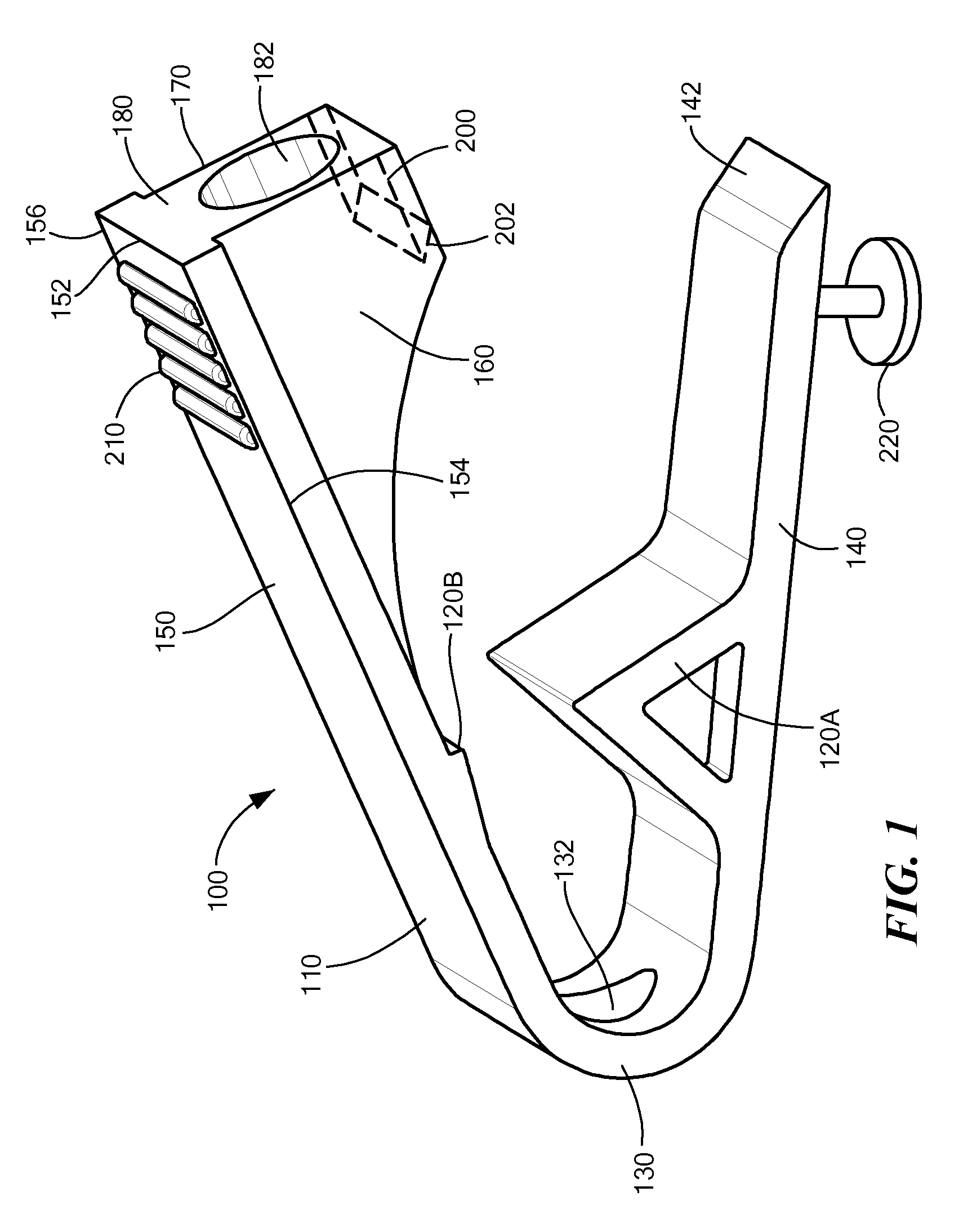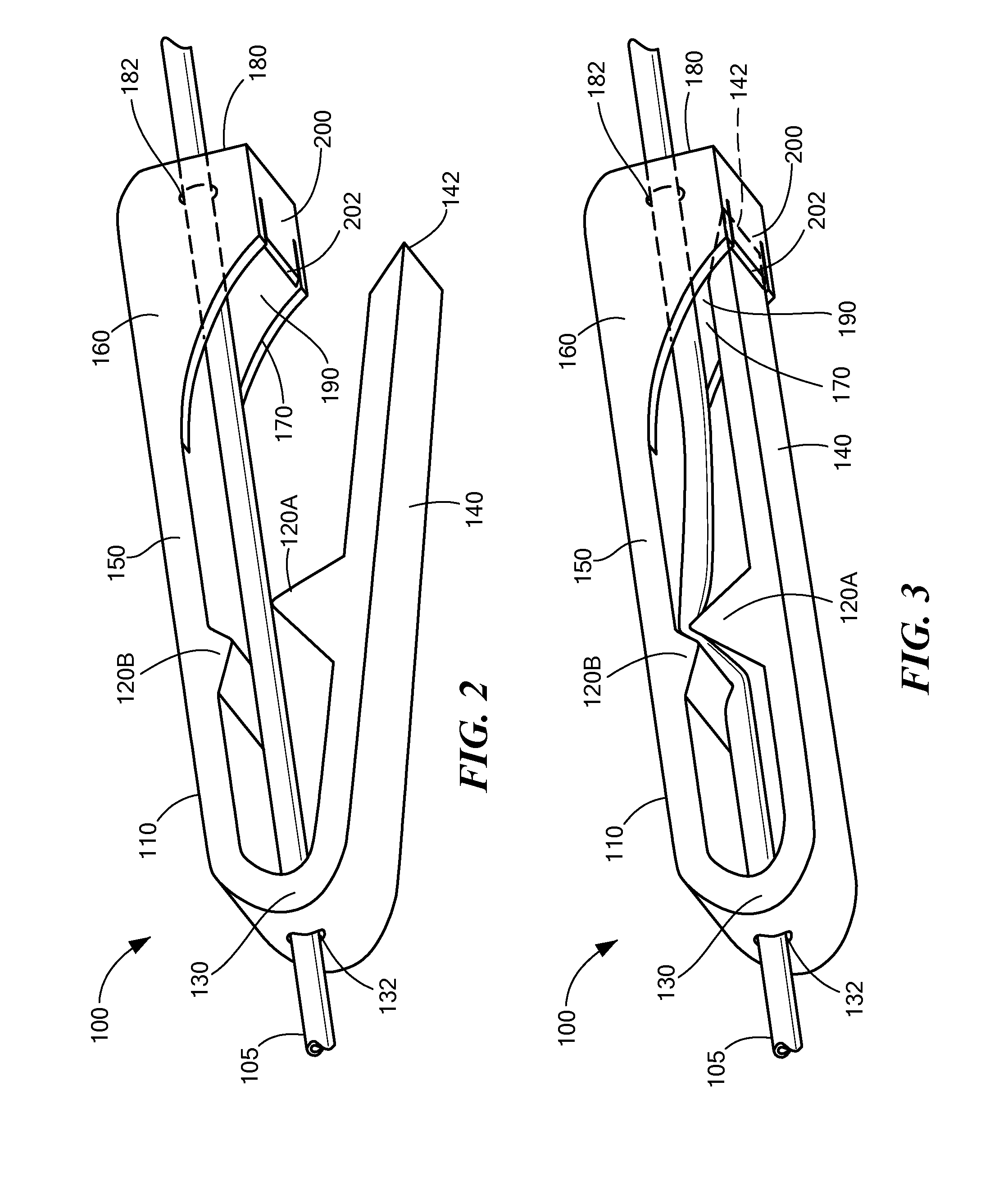Non-reopening tubing clamp and method of use thereof
a tubing clamp and non-reopening technology, applied in the direction of engine diaphragms, diaphragm valves, mechanical equipment, etc., can solve the problems of affecting the collection/processing procedure, many prior art clamps can be accidentally and/or erroneously opened,
- Summary
- Abstract
- Description
- Claims
- Application Information
AI Technical Summary
Benefits of technology
Problems solved by technology
Method used
Image
Examples
Embodiment Construction
[0004]In a first embodiment of the invention there is provided a medical tubing clamp having a first member, a second member, and a hinge connecting the first and second members to form a body. The second member may have a first and second wall portion that extend distally toward the first member, and a shelf that extends between the first and second wall portions. The first and second wall portions and the shelf may define a recess. The hinge may allow the first and second members to move relative to one another to transition the clamp between an open mode and a closed mode. The first member may be located within the recess and may be supported by the shelf when in the closed mode. The hinge has a first opening for receiving the tubing. The clamp may also have a tubing closure member (on the first or second member) that deforms the tubing to prevent fluid flow through the tubing when in the closed mode.
[0005]In some embodiments, the second member may include a third wall portion th...
PUM
 Login to View More
Login to View More Abstract
Description
Claims
Application Information
 Login to View More
Login to View More - R&D
- Intellectual Property
- Life Sciences
- Materials
- Tech Scout
- Unparalleled Data Quality
- Higher Quality Content
- 60% Fewer Hallucinations
Browse by: Latest US Patents, China's latest patents, Technical Efficacy Thesaurus, Application Domain, Technology Topic, Popular Technical Reports.
© 2025 PatSnap. All rights reserved.Legal|Privacy policy|Modern Slavery Act Transparency Statement|Sitemap|About US| Contact US: help@patsnap.com



